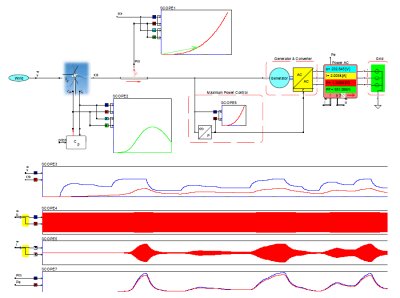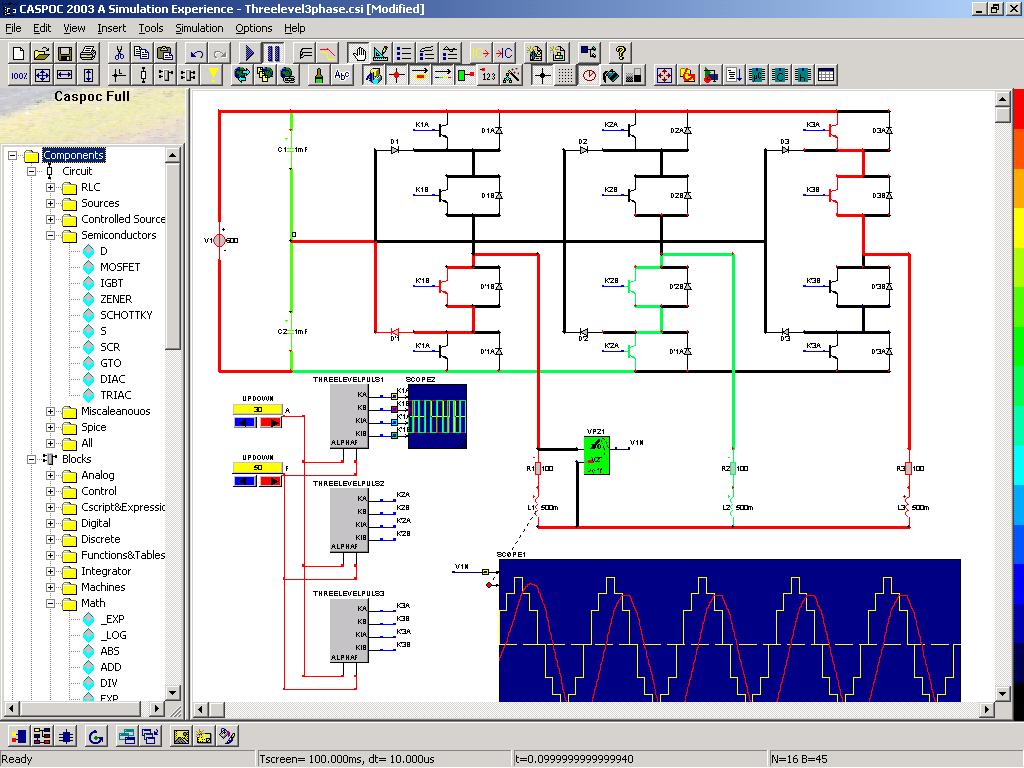-
- Actuators
- Coil Design
- Electromagnetic Brakes & Clutches
- Inductors
- Levitators
- MRI
- Motors
- Alternators and Generators
- Electromagnetic Brakes and Clutches
- Sensors
- Loudspeakers
- Magnetic Encoding
- Relays and Contactors
- Solenoids
- Shielding
- Electromagnets
- Magnetic Bearings
- Magnetic Signatures
- Magnetic Fixtures
- Magnets
- Non Destructive Testing
- Particles
-
- Antenna Radiation Characteristics
- Simulation of an Airplane
- EM Simulation of a Desktop
- EM Compatability and EM Interference
- Cable Junctions and Terminations
- Filters
- Lightning Strikes
- Microwave Circuits
- Microwave Ovens
- MRI
- Near Field Analysis
- Radar Cross Sections
- Radio Frequency Cavities
- Reflector Antennas
- Sensors
- Ultra Wideband Antennas
- Waveguides
- Antennas
Wind Power
Model a complete system, from varying wind speed to grid connection.

The design optimization of generators powered by wind energy requires knowledge of electromagnetic energy conversion; in wind power systems, the control is clearly dependent on the wind speed.
CASPOC™ analyzes the efficiency of a wind power generator in order to:
- Maximize the amount of power the wind turbine generator can deliver
- Reduce the losses inside the generator – each reduction of loss means that the generator delivers more output.
In terms of solvers, FEM allows design engineers to analyze in detail the internal area in their generator design models. BEM on the other hand, provides information about the outer surface that has been defined; thanks to the BEM technology, no mesh in the airgap and exterior space is required. For this specific application, the use of BEM gives more accurate results than does FEM analysis.
Some features in CASPOC™:
- Standard model for wind turbine efficiency, as well as detailed characteristic from manufacturer. The [power coefficient Cp], or [constant of Betz] can be included in the simulation
- Maximum Power Control via the inverter
- PQ control for grid connection
- Variable wind speed
- Horizontal three wing turbine model, as well as vertical axis turbine
- Modeling of the rotating shaft with inertia, non-linear friction and oscillations in the shaft
- Generator model can either be an ideal model or detailed with data from MAGNETO™ or AMPERES™
- Various types of generators are possible, including SG:Synchronous generator with external field; PMSG:Permanent magnet synchronous generator; Axial-PMSG:Axial permanent magnet synchronous generator; IG:Induction generator, DFIG:Doubly fed induction generator
- Power electronics for modeling the inverter
- Pitch control
- Detailed simulation on micro-second level
- System simulation to evaluate the performance for a day or week for varying wind speed
